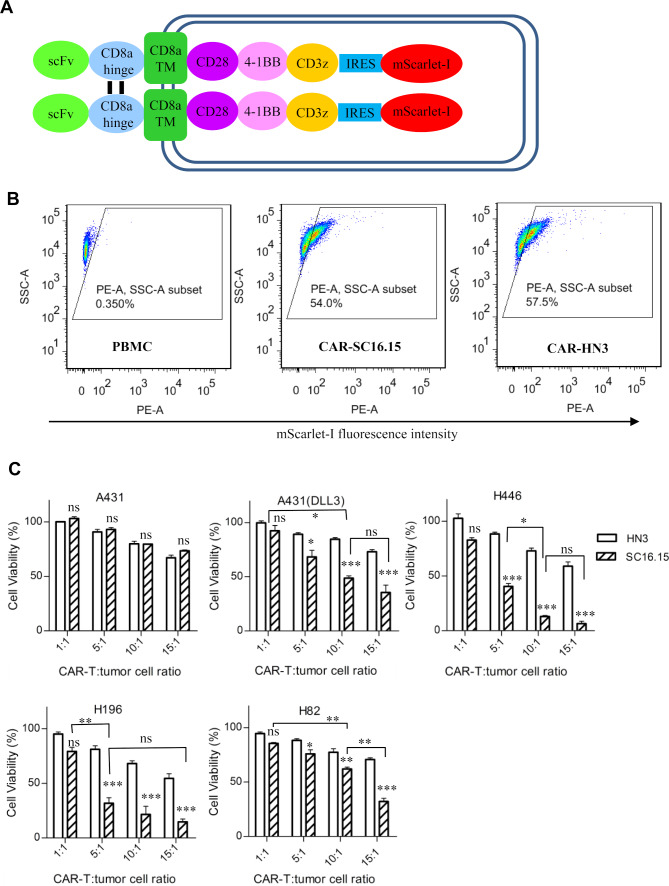Figure 5.
In vitro cell killing assay of the delta-like 3 (DLL3)-targeted chimeric antigen receptor (CAR)-T. (A) Schematic diagram of the CAR structure. Anti-DLL3 scFv (SC16.15) or isotype control (HN3, a human antibody that targets glypican-3, sequence from patent US20140044714) was fused with the following domains, the CD8α hinge, CD8α transmembrane region, CD28 intracellular domain, 4-1BB intracellular domain, CD3ζ intracellular domain, internal ribosome entry site (IRES, from encephalomyocarditis virus), and a red fluorescent protein mScarlet-I. (B) Transduction efficiency analysis of the CAR-T cells, as indicated by the expression of mScarlet-I. Untransduced PBMC was used as negative control. (C) Cell killing measurement of the CAR-T cells. All the cancer cell lines were stably transduced to constitutively express a fire fly luciferase reporter gene (ffLuc2). Ten thousand cancer cells were coincubated with different amount of CAR-T cells for 48 hours. The cell viability was quantified by measuring the intracellular luciferase activity. HN3 was a negative control CAR that targets glypican-3. Data represent mean±SEM. Statistical comparisons between the DLL3 CAR-T (SC16.15) and the control (HN3) at each CAR-T: tumor cell ratio was calculated and labeled on the top of the bar. Comparisons between different DLL3 CAR-T ratios were also calculated. ns, not significant, *p<0.05, ** p<0.01, ***p<0.001.

